Today, RisingAuto Motors officially released high-definition images of its upcoming flagship model, the RisingAuto R7. There are many highlights, so without further ado, let’s take a look at the pictures.
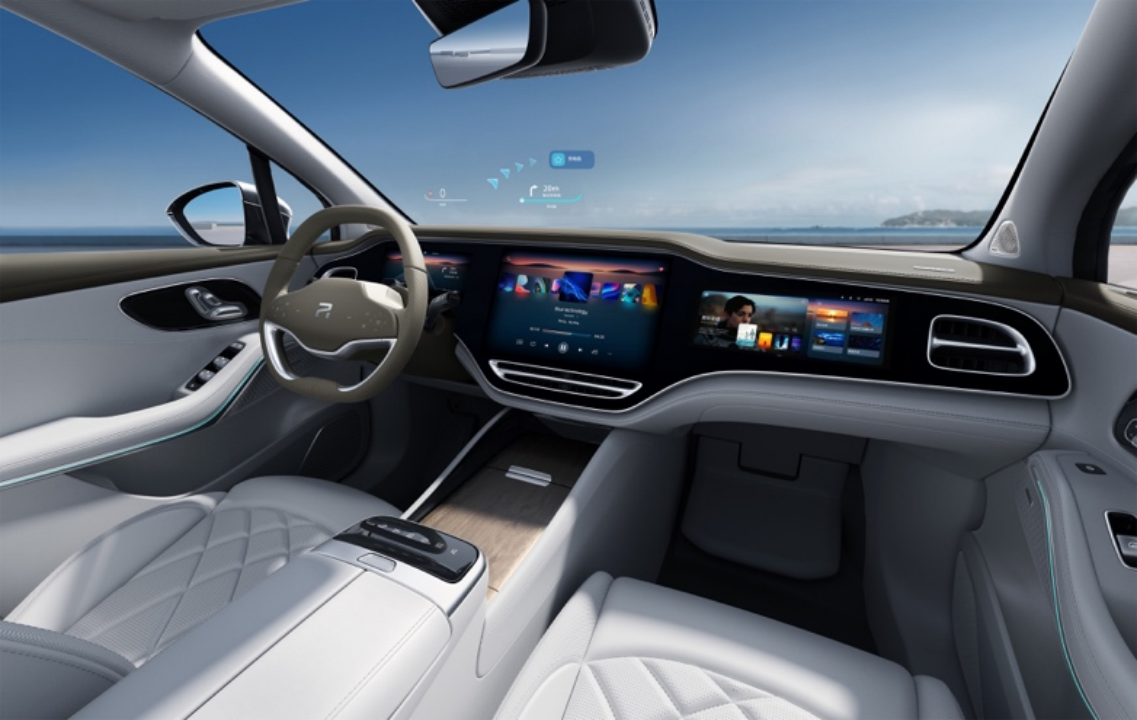
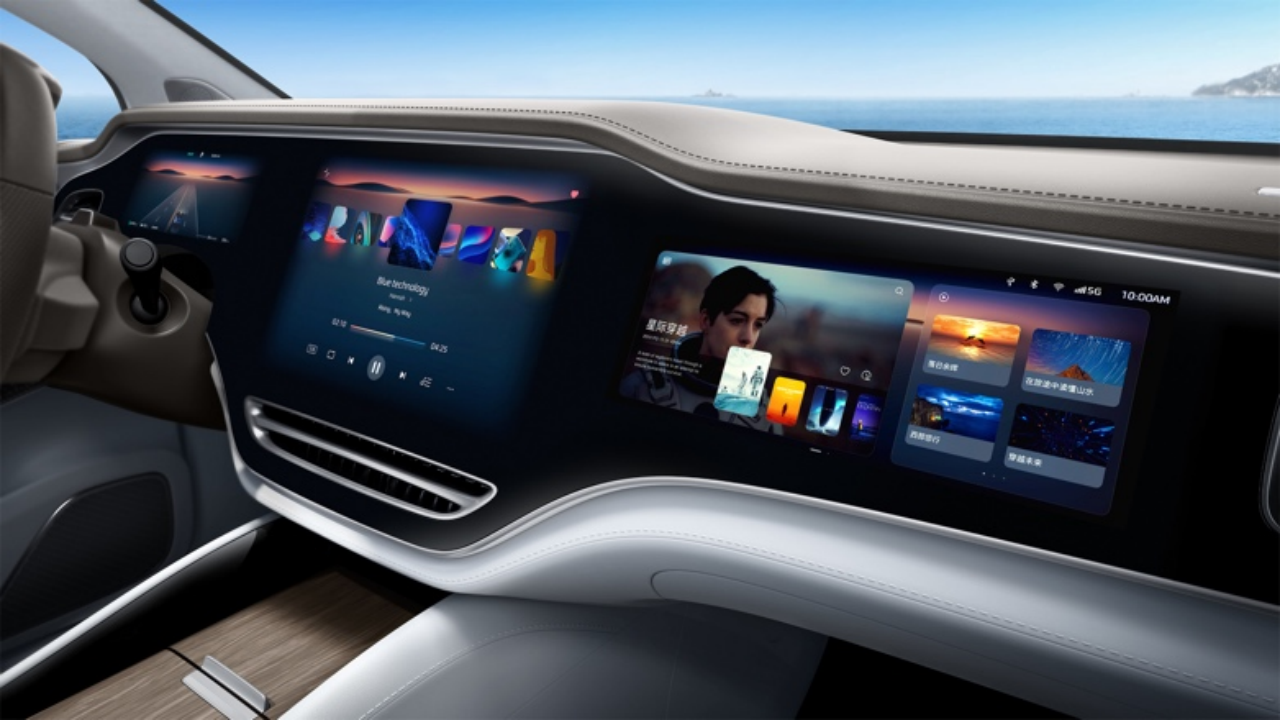
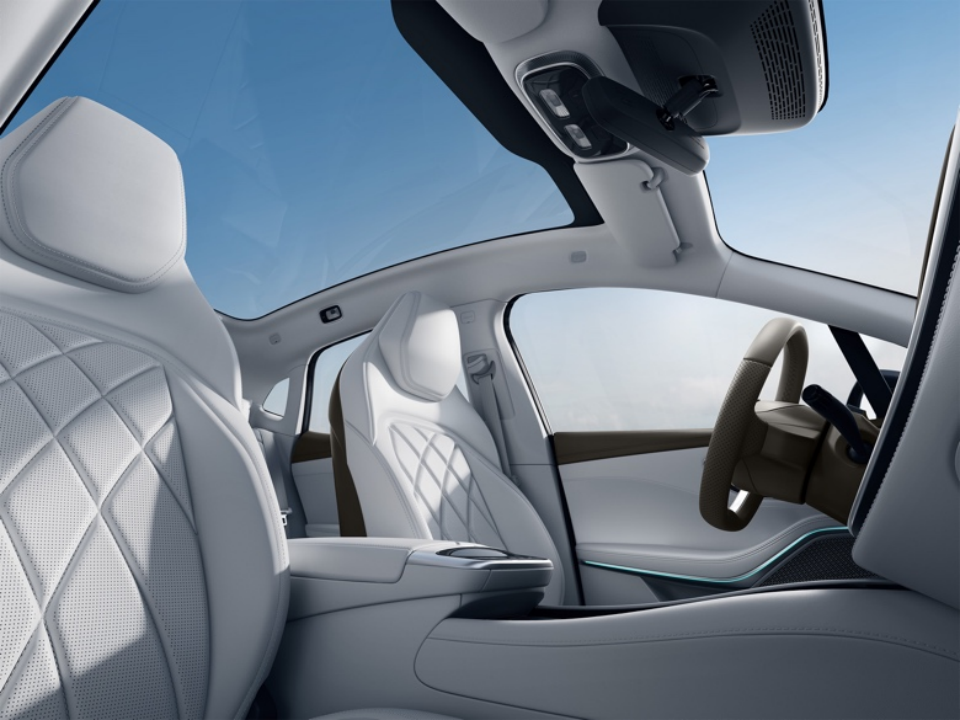
Striking 43-inch Triple-Screen Display
Undoubtedly, the most eye-catching feature of the entire cabin is the integrated 43-inch wide full-color triple-screen display. The reason why it attracted me is not only because of its huge size.
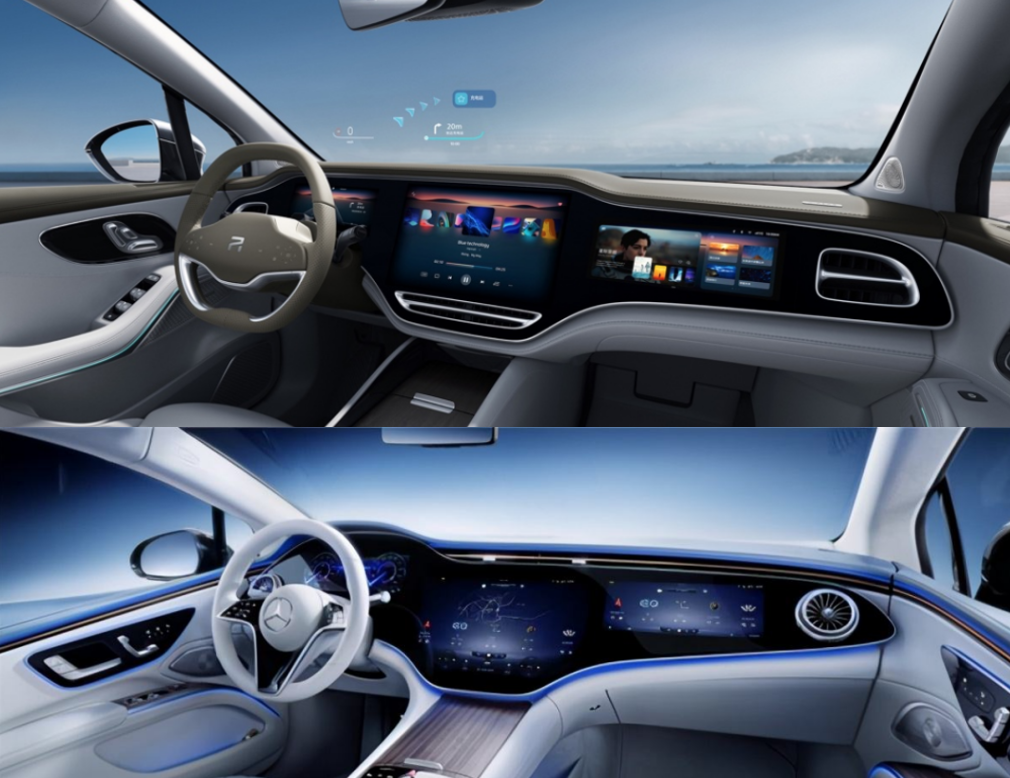
If you didn’t tell me the car model brand, I would hardly imagine that this is the internal decoration of the RisingAuto R7. The similar three-screen design, the similar integrated cover plate, the similar air outlet positions, and the fit of several characteristic points all make people easily think of the Mercedes-Benz flagship model EQS. After all, only the EQS and R7 employ this design on the market.
The two cannot be said to be identical, but they can be considered brothers.
Looking closely at the differences in appearance, the glass of the RisingAuto R7 display is more regular, without the partition of air outlets on both sides, and the position of the central air outlet is located below the screen, upgraded with electric wind direction adjustment.
I’ll not judge whether this design is good-looking or not here, but at least I truly feel the overall sense brought by the high-cost integrated packaging technology. When I entered the cabin for the first time, I couldn’t help but exclaim, “WOW.”

Previously, the EQS of Mercedes-Benz received criticism due to the reflection problem caused by the oversized screen. In order to solve the screen reflection problem, the screen on the RisingAuto R7 is encapsulated with an optical coating glass panel, which not only has a strength 6 times that of ordinary sodium-calcium glass, but can also prevent fingerprints, glare and reduce reflections.
The three screens under the glass have top display parameters:
- 15.05-inch, 2,560 * 1,600 resolution, OLED flexible material central control screen
- 10.25-inch, 1,920 * 1,080 resolution, Mini LED material instrument screen- 12.3-inch, 1,920*1,080 resolution, Mini LED material co-driver screen
The screens on the car’s entertainment system have always lagged at least one generation behind mobile devices due to issues such as vehicle certification. However, the screen parameters revealed by RisingAuto R7 this time can even surpass those of a mobile device.
In addition to the large size and full HD resolution, all three screens of the RisingAuto R7 use OLED and Mini LED materials from BOE, a leading global panel industry company. As far as I know, every four displays in the world are made by BOE. The RisingAuto R7 combines the advantages of both materials.
The central main screen, which bears the main interaction function, is usually viewed and used from the side. To take care of the viewing experience of different seats and prevent color deviation when viewed from the side, a flexible AMOLED screen with a viewing angle close to 180 degrees is used. The active light-emitting feature of OLED naturally gives it a large viewing angle advantage.
At the same time, OLED also has the characteristic of not emitting light when displaying black, which can avoid the grayish black part of the screen interface when driving at night. Based on this advantage, the HMI interface of the RisingAuto R7 uses a dark mask to naturally transition at the frame, weakening the visual gap between the screen and the panel.
Car brands have rarely publicly released the color parameters of their car screen. However, RisingAuto directly released the color gamut parameters of the central control screen on the R7, which achieved 100% NTSC color gamut. Obviously, better color performance can provide us with a better viewing experience when watching movies and TV shows. As car brands pay more attention to in-car entertainment functions, the color performance of the entertainment system screens will attract more consumers’ attention.
In the past, LCD instrument panels were usually embedded in the instrument panel because ordinary LCD instrument panel display brightness was not enough, and a frame had to be added to prevent insufficient brightness under strong light, making it difficult to see information like speed.
The instrument screen and co-pilot screen of the Byton R7 are made of Mini LED material, which can achieve higher brightness compared to the LCD used in traditional liquid crystal instruments, making it clearer to see under strong outdoor light conditions.
Do you remember a few years ago when it was difficult to see the phone screen clearly under direct sunlight while using the phone? However, in the last two years, most new phones seem to have solved this problem. Behind this is the benefit brought by the increase in mobile device screen brightness. For example, the 2017 iPhone 8 had a maximum screen brightness of 625 nit, while the latest iPad Pro, which was released last year and uses Mini LED, has a full screen maximum brightness of 1,000 nit, nearly double that of the iPhone 8.
The Byton R7’s central OLED screen has a maximum brightness design of 800 nit, while the instrument Mini LED screen has a maximum brightness of 1,000 nit, which is the same as the latest iPad Pro. Even in normal sunlight, the screen can be completely visible.
Under high brightness conditions and prolonged display time, the aging speed of Mini LED is slower than that of OLED. For screens that need to display the same UI at high brightness for a long time, such as instruments, Mini LED is obviously more suitable. In addition, the feature of Mini LED can control light by partition, increase the contrast of the picture, reduce light leakage, and to a certain extent, realize non-emitting black areas.
The combination of the central OLED and the Mini LED instrument on the Byton R7 has also appeared on products like NIO ET7 and will likely become the mainstream in high-end car infotainment screen configurations this year.
The hardware of these three screens can be said to have reached the ceiling of the cabin, and the Byton R7’s chip uses the mainstream Snapdragon 8155 chip with a 7 nm process.
From this, it can be seen that the progress of chip development in car-grade has not been as fast as the screen. Although this chip’s performance is not weak, when faced with the growing demand in the cabin, it will soon reach a bottleneck.
However, Qualcomm’s next-generation car-grade chip 8295 will begin mass production in the third quarter of 2023. Therefore, the Snapdragon 8155 is currently the best solution for car-grade chips.The strong hardware capability determines the high ceiling of this car, but the level of experience depends entirely on software capability, which is also our most concerned point about RisingAuto R7. However, the screen configuration of RisingAuto R7 this time really surprised me because this aspect has never been the focus of RisingAuto’s attention. The configuration announcement seems to indicate that RisingAuto has a different definition of R7 than before. While maintaining basic capabilities, it is beginning to add more advanced intelligent hardware. It is precisely the excellent quality of these three screens that has aroused my interest in other parts of it.
Huawei’s AR-HUD system for visual enhancement makes its first appearance
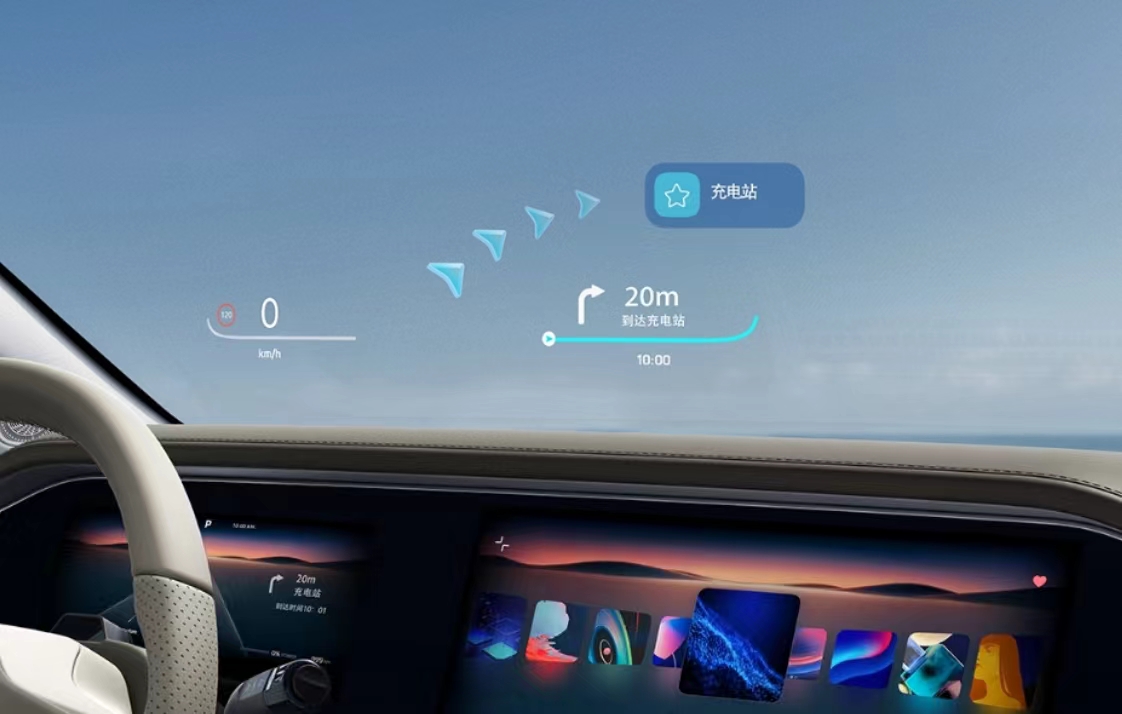
As a new member of the cockpit, RisingAuto R7 naturally did not miss out on this with the AR-HUD, and directly unveiled Huawei’s AR-HUD system for visual enhancement. From the picture, at least the display area is indeed not small, and the displayed content includes speed, speed limit, assisted driving status, and projection of navigation information.
In RisingAuto’s introduction, this HUD can achieve lane-level real-world navigation and superimpose the display on the road surface. It sounds a bit like the system on the new Mercedes-Benz S, but there are currently no actual demonstration screens released. Compared with the ordinary HUD on the Ideall L9, AR-HUD can achieve a more immersive experience, and the superimposed display effect is also more intuitive.
The resolution of this system should not be low because RisingAuto claims that this HUD can also be used as a giant cinema when parked. If the resolution is too low, it is obviously impossible to support the playback of movies. I am curious about what kind of experience watching a movie on the HUD is like.
What other details does this cockpit have?
Automatic all the way
RisingAuto R7 is equipped with a frameless induction-type electric door, which can automatically open the door to welcome people and close and lock the door automatically when people leave the car.
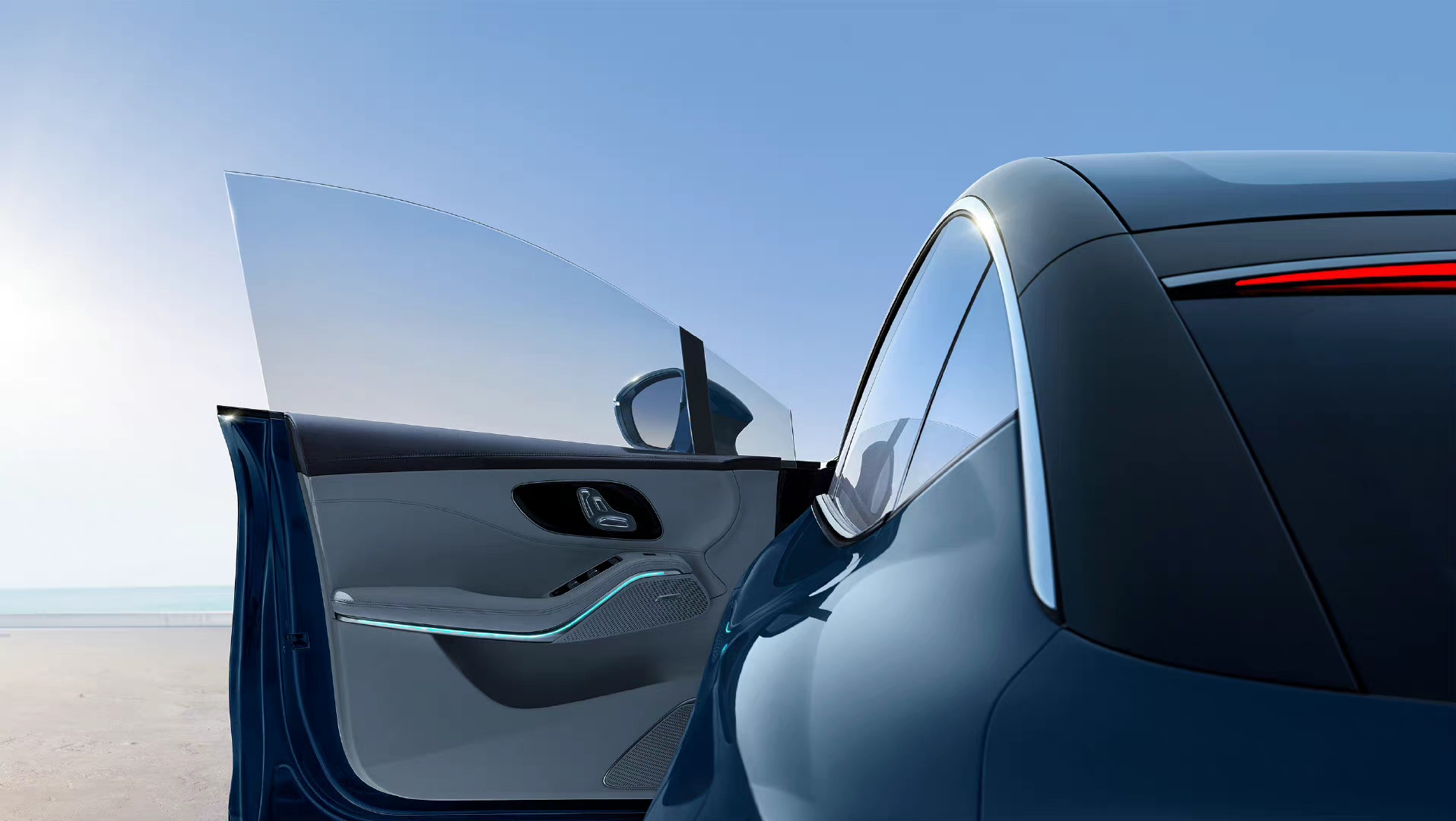
The difficulty of electric doors lies in finding a balance between safety and convenience. Otherwise, it will become the object of criticism like Kuaishou 001. This time, RisingAuto emphasized in the introduction that it can effectively recognize obstacles and automatically pause door opening, improving the sensitivity of the safety sensor.
Compared with Kuaishou 001, RisingAuto R7 can open the door to greet people when they approach like Model S/X. In addition to being equipped with an electric structure, it also places higher requirements on the Bluetooth unlock judgment distance of the vehicle. If everything is as described, the experience of hands-free electric doors is still worth looking forward to.
Streaming media rearview mirrorYou can see from the multiple wire harnesses on the rearview mirror that the FF R7 is equipped with a streaming media rearview mirror. With the front row infotainment screen and AR-HUD, the vehicle has a total of five screens, pushing the limit when it comes to screens.
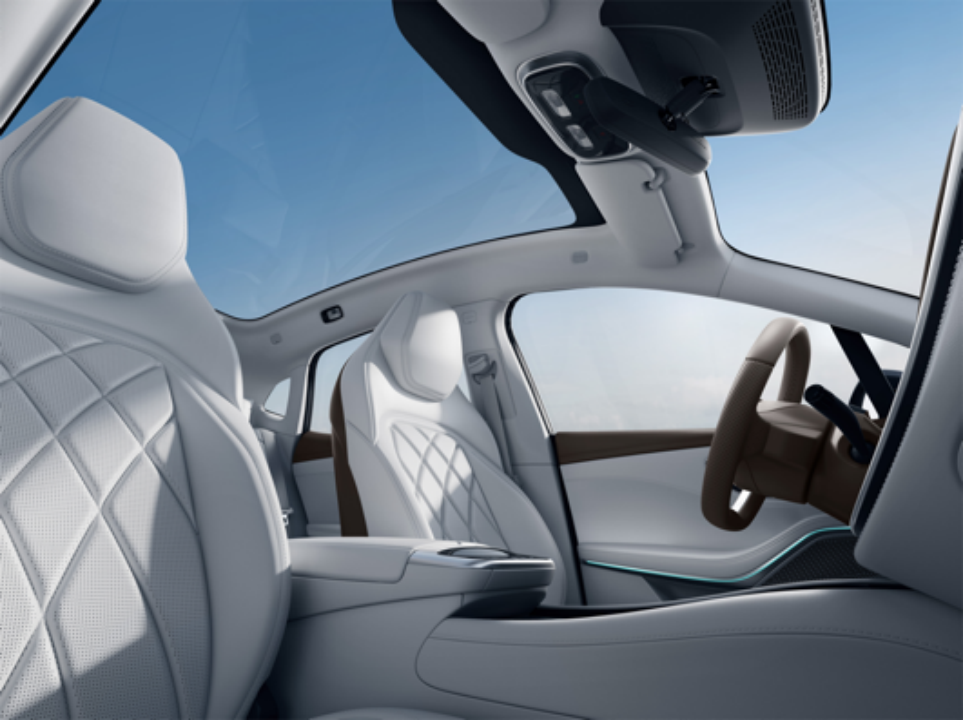
Is there a first-class cabin as well? The FF R7 has the “FF Exclusive Co-Pilot” feature, which can be activated with one click on the central control screen. What is “FF Exclusive Co-Pilot”? Essentially, it is a function similar to that of a queen’s co-pilot. When you press the button, the seat will automatically recline, the massage and heating functions will be activated, and the electric leg rest will be raised. If you wish, the electric footrest, music, and ambient lighting can also be turned on.
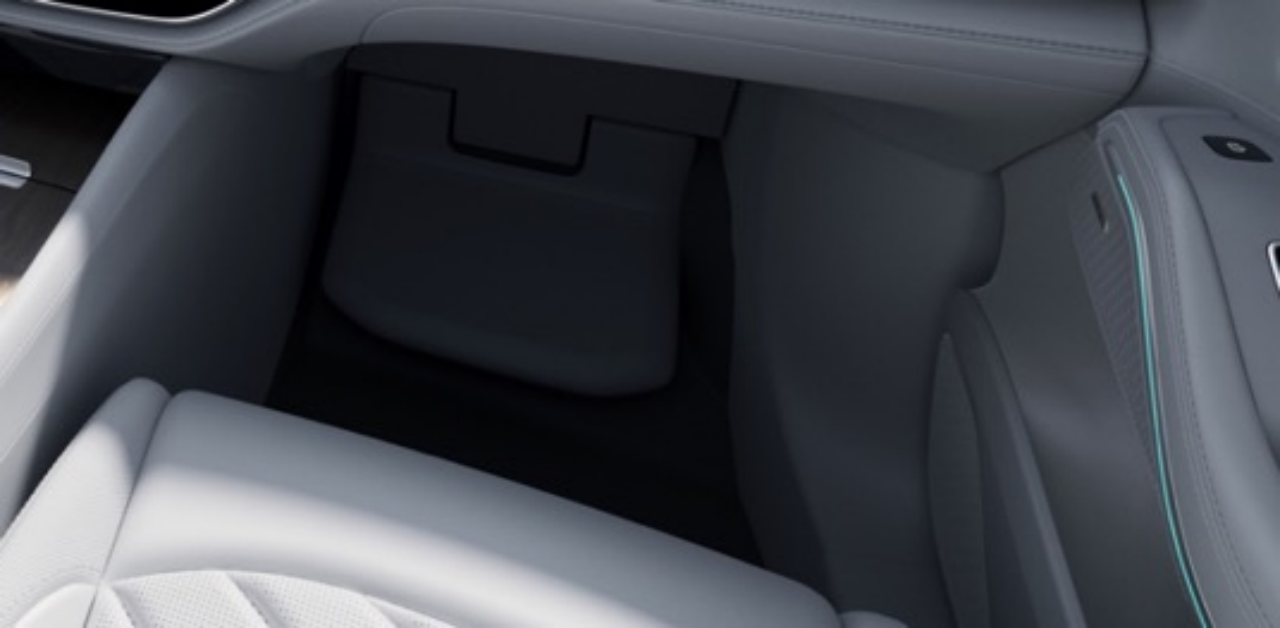
Compared to the queen’s co-pilot on the NIO ES8, the electric footrest on this co-pilot also supports heating, which can be considered as a small advancement. It seems that FF also knows that pleasing the co-pilot is a key element in selling cars.
Is there anything special about the steering wheel? The steering wheel has a flat top and a flat bottom, with a visually lower center of gravity and a perforated grip area. The one-piece steering wheel panel uses concave-convex tactile buttons, and in addition to the usual up, down, left, and right buttons, there is also a customizable button for quickly accessing frequently used functions. Above this button is the advanced driving assistance system button, which can be used to activate the feature with one click. The back of the steering wheel features a gear shift design.
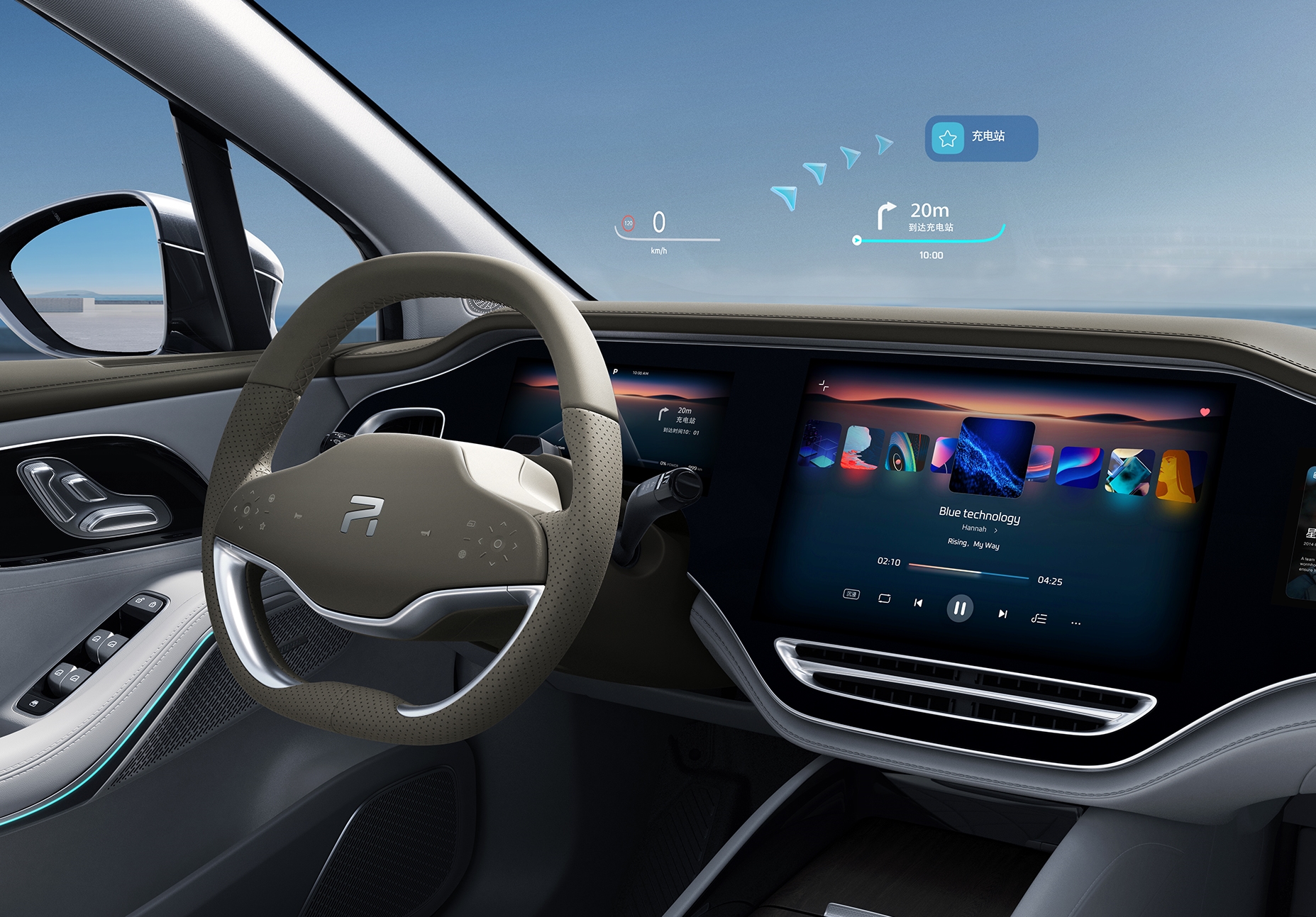
I believe that many people’s first impression upon seeing this is strange. In order to avoid obstructing the dashboard display, a large hollow was made at the top of the FF R7’s steering wheel, resulting in a visually lower center of gravity, which is a new requirement of the cockpit.
As instrument panels become more screen-based, all automakers are pursuing larger instrument sizes to improve visual effects. However, larger screens also bring the problem of obstruction by the steering wheel, such as in the case of the Xpeng P5, where the upper corners of the screen on both the left and right sides are always obstructed no matter how the seating position or steering wheel height is adjusted.
We can reasonably believe that the FF R7 will largely avoid this problem.
Why are there no physical adjustment buttons for the rearview mirror?
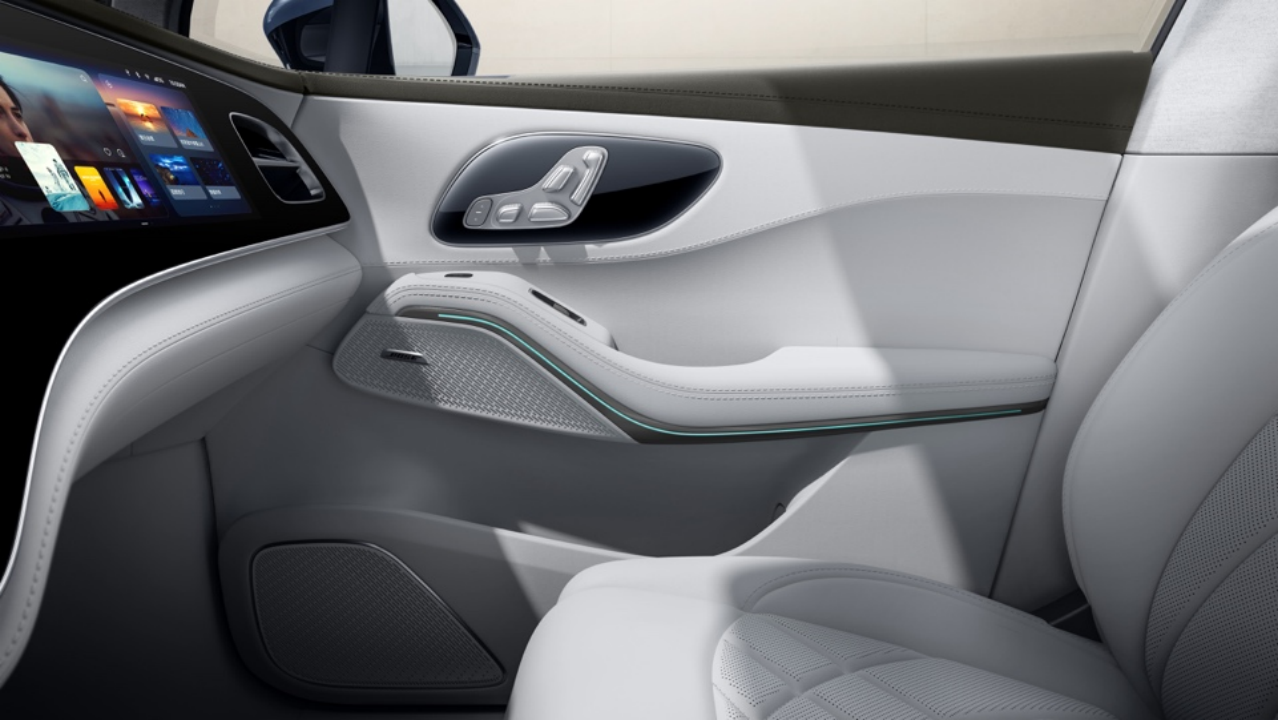 From this picture, we can see that the Flybot R7, like the Mercedes-Benz, places the seat adjustment on the door panel and separately sets an area covered with a piano paint panel. The door panel adopts a streamlined design that is in line with the dashboard and looks like leather material. The most important highlight is that the R7 also eliminates the physical adjustment of the rearview mirror, which is a very bold move.
From this picture, we can see that the Flybot R7, like the Mercedes-Benz, places the seat adjustment on the door panel and separately sets an area covered with a piano paint panel. The door panel adopts a streamlined design that is in line with the dashboard and looks like leather material. The most important highlight is that the R7 also eliminates the physical adjustment of the rearview mirror, which is a very bold move.
When Tesla Model 3 just cut off the physical adjustment button of the rearview mirror, it was criticized because it broke the traditional driving habits. However, it proves that this is a button with a very low frequency of use. If the rearview mirror is associated with seat memory, this button is not necessary in most driving environments.
Bose Audio?
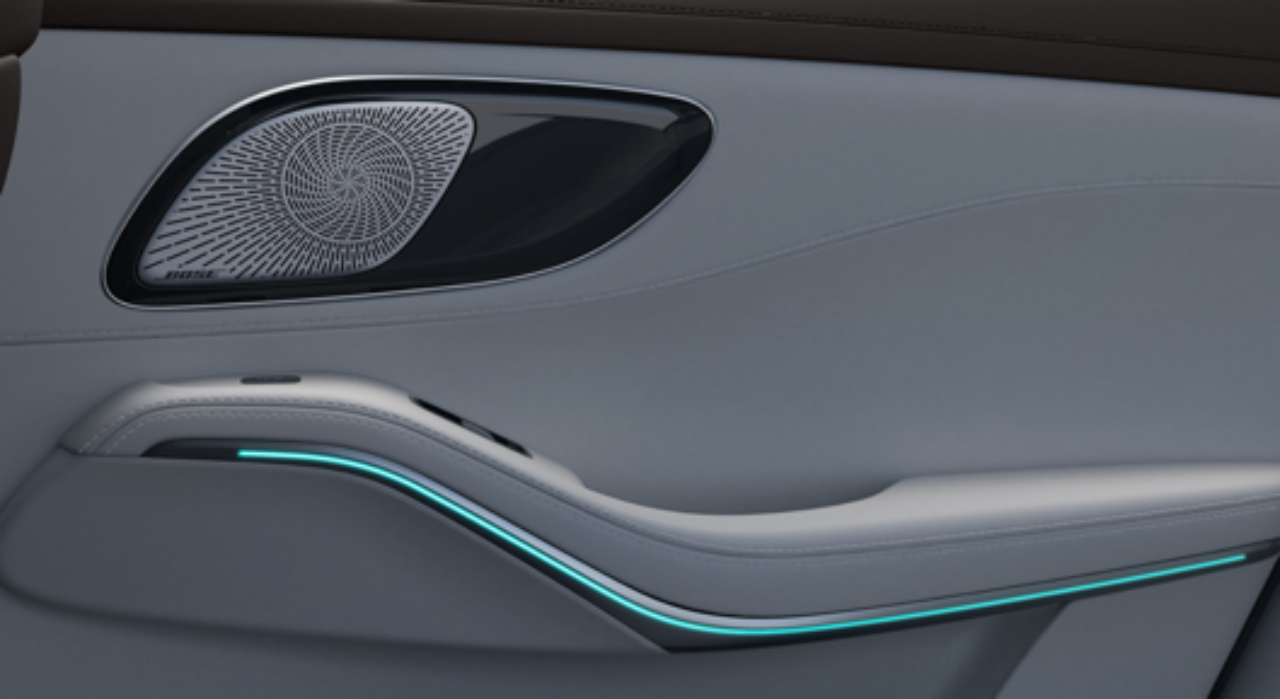
The rear door panel is made of three materials: piano paint, leather, and metal. There is a streamlined linear atmosphere lamp with 256 colors under the armrest, and two separate speakers are also provided. From the logo, we can see that the audio comes from Bose.
From the buttons to the screen, the car cockpit has completed a round of evolution, but before fully autonomous driving is achieved, it is difficult for drivers to truly free themselves from driving. Therefore, the only thing that can be done while driving is to listen, so improving the auditory experience is the core focus of all car companies’ cockpits.
The rear seats look good?
Compared with the luxury mode of the front seat, the rear seat is much simpler with the same rhombic checkered design as the front seat. By careful observation, it can be seen that the rear seat cushion has been extended and the front end has also been raised. The middle seat is relatively flat, with a small single-layer headrest, which is not a big problem for emergencies, while the two side seats adopt the double-layer headrest design of Maybach.

Moreover, from the styling of the door panel, the Flybot R7 also uses electric buttons instead of physical handles to open the doors.
In conclusion
This time, the Flybot R7 finally achieved a unified design of the interior and exterior. The exterior of the Flybot R7 uses a lot of streamlined designs, including an eagle-wing-shaped daytime running light, a sleek shape, and a line that rises at the end of the window. The overall style is simple and smooth.

The interior design follows the minimalist style, and the door panel and dashboard lines surround each other, with the central armrest interspersed, creating a suspended feeling between the dashboard and the central armrest.Apart from the styling, material selection is also an important factor affecting the interior texture. A good style can easily turn into an auto parts city style if the material is not up to standard. Judging from the images, the material selection of the FlyBan R7 also follows the idea of simplicity, using large areas of white NAPPA leather with natural wood decorative panels, creating a light visual impression, creating a home-like atmosphere, and this is also why the current car industry is highly respected for the second living room concept.
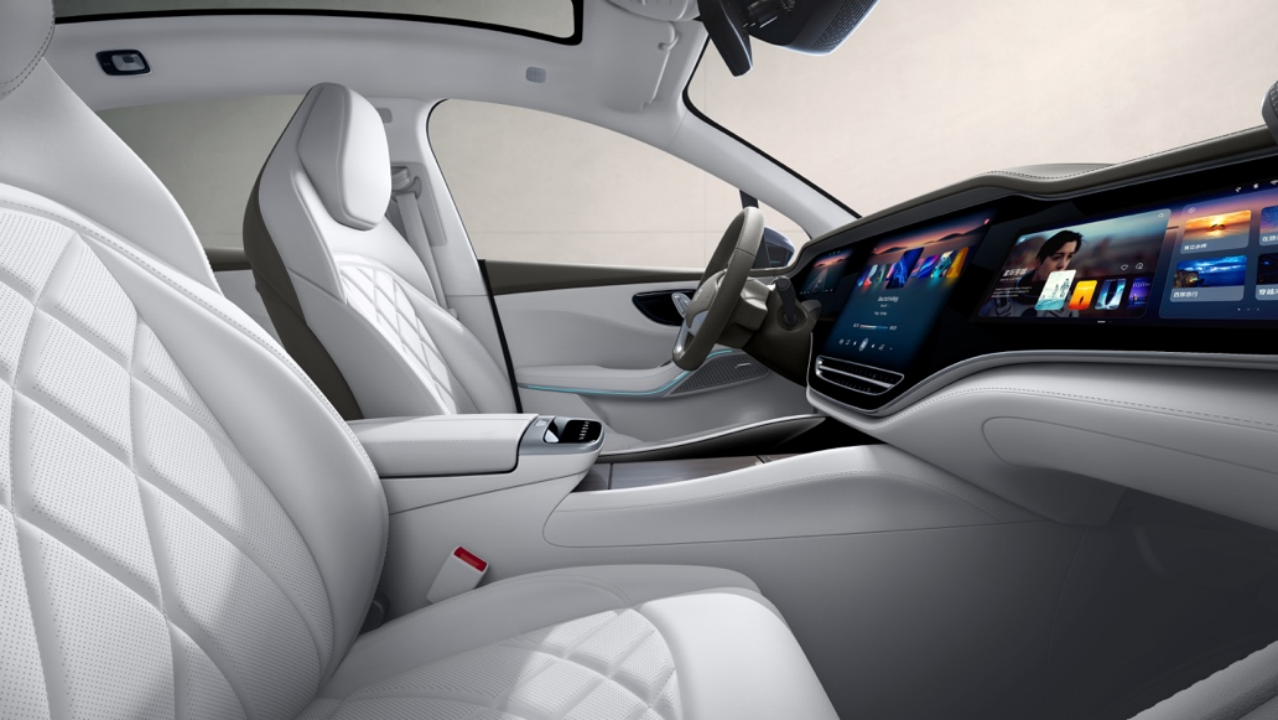
The interior design of the R7 was created by Martin Kropp, the former chief designer of Volkswagen, and current co-creator of the FlyBan Automotive Design Center, who won the Best Design Quality Award at the German Industrial Design Awards with the Volkswagen CC.
Whether it looks good or not is subjective, but at least in terms of uniform exterior styling, it has improved the previously criticized points.
The release of four interior images of the FlyBan R7 this time revealed many details, and the intelligent hardware is at the first-class level, displaying intention, and it can compete with top models of emerging forces, even against the similarly styled million-dollar model EQS. In addition to configurations such as Snapdragon 8155, AR-HUD, one-click exclusive mode, central control zone, 14-unit Bose sound system, and electric door handles, it made me interested in a FlyBan model for the first time.
The source of this idea came from my surprise that the cockpit hardware of the FlyBan R7 completely met my needs, and as a brand from the traditional automaker SAIC, they did not make a mistake in the aesthetic style selection. It should be noted that a huge advantage of emerging automakers compared to traditional automakers is that emerging automakers know very clearly what consumers want, while traditional brands often make products that cater to the aesthetic preferences of their leaders but are disconnected from the consumer base due to various reasons within the company.
I am not sure what caused such a significant change, but if FlyBan Automotive truly learns how to face its users directly, and coupled with the comprehensive and mature supply chain support from SAIC, their fighting power may be formidable.
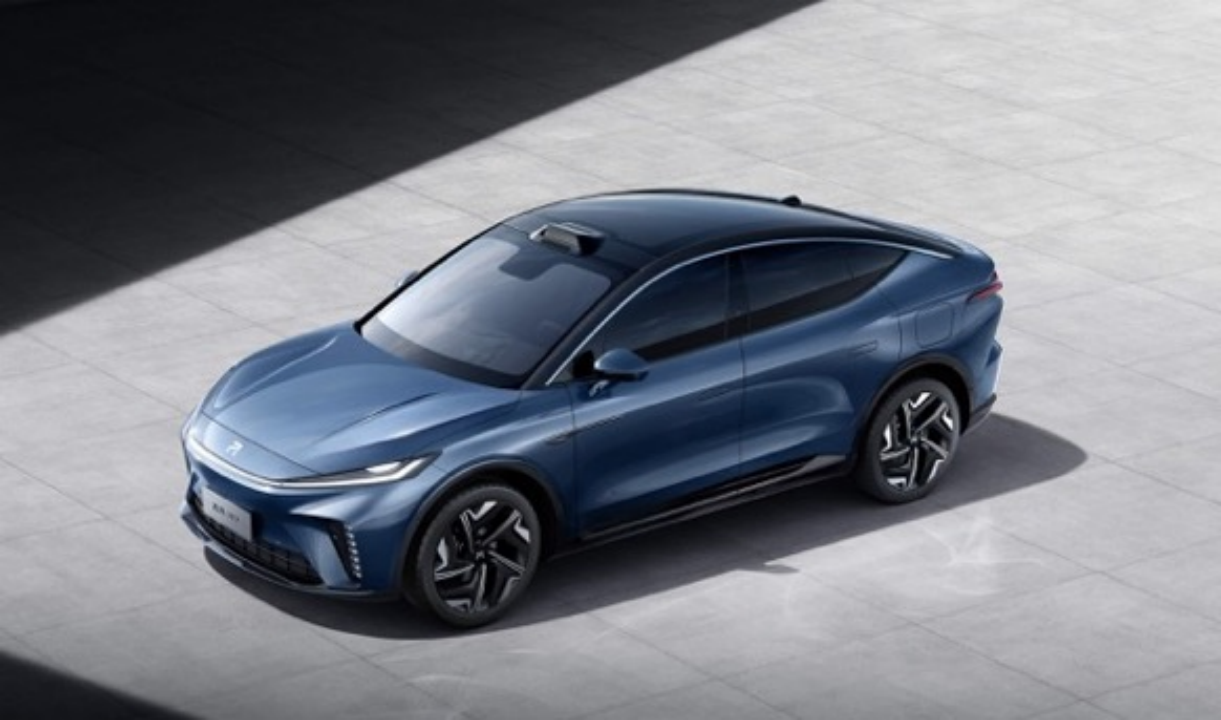
It is rumored that the selling price of this model will be in the range of 300,000 to 400,000 yuan, which is significantly lower in price compared to the EC6 of the same level, which ranges from 380,000 to 480,000 yuan. FlyBan obviously has made greater efforts in hardware and pricing.
In addition to the cockpit, the advanced driving assistance hardware released in March last year can be regarded as top-level, with a 1,550 nm laser radar, 4D imaging millimeter wave, an 8 million pixel camera, and an Nvidia Orin chip, even comparable to the NIO, Ideanomics, and XPeng.With the powerful hardware of RisingAuto R7, it can be said that it has already won the title of “Material Flagship”. However, how to transform from “Material Flagship” to “Experience Flagship” depends on the performance of RisingAuto’s software department.
This article is a translation by ChatGPT of a Chinese report from 42HOW. If you have any questions about it, please email bd@42how.com.
![Full force ahead - Flyover R7 cockpit interpretation [First wave]](https://upload.42how.com/en/2023/03/20230311025250260.png)